|
I've done several talks now on the history of hot chocolate, and in the slide on white chocolate, someone expressed skepticism about the fact that Nestle invented white chocolate in the 1930s, although that is the current consensus on the internet. For the Nestle claim - sources differ. Some say they were manufacturing it as early as 1930. Others say the introduction of the Galak bar (known as the Milkybar in the UK) in 1936 was the first. Still others claim it wasn't really white chocolate until the 1948 Alpine White Bar, which contained almonds. This article indicates that Nestle's research into a coating for a children's vitamin was what birthed white chocolate. Still, it did seem a little unusual that white chocolate was developed so late (even though milk chocolate wasn't really a thing until the 1890s). So I did a little digging. There wasn't a whole lot out there. Most of the hits were for the words "white" and "chocolate" that just happened to be next to each other. I got excited by a reference to "white chocolate cake" from the 1870s, but that turned out to just be a white cake with chocolate frosting. But then, I started to find some interesting tidbits. White Chocolate Skepticism, 1916First, I found this little snippet from the December, 1916 issue International Confectioner, in an article entitled, "Chocolate a la Noisette, Part II" by T. B. McRobert. In this section, McRobert expresses deep skepticism that the Swiss have invented a "snow white chocolate," and speculates that they bleach it with chlorine gas, sulphur [sic] fumes, or hydrogen dioxide, rendering it nearly inedible. He ends the article with the comment, "Certainly we hear some queer and weird stories from Europe these war times, and perhaps the 'snow white' chocolate is one of these war time yarns. Certainly 'snow white' chocolate is never likely to be any howling success in this country, if in fact such a thing could ever be made here and comply with our food laws, which is more than doubtful." I did find another reference, several years later, in the 1923 Encyclopedia of Food by Artemis Ward. In the entry for "Cocoa-Butter," the main text is followed by this little intriguing sentence - "Swiss 'white chocolate' - apart from milk-chocolate types - is cocoa-butter sweetened either with sugar or with sweet chestnut-meal." A tantalizing snippet, unreadable in full (thanks, Google Books), indicates this description in Food Industries Manual published in 1931, on page 142: "White chocolate is manufactured from sugar, milk powder or condensed milk, and cocoa butter, and the flavour of chocolate is dependent upon the cocoa butter content. Accordingly a very strong cocoa butter is used in the manufacture ..." and that's all we get! Still, we're definitely pre-dating the Nestle story. And then there was this strange little find. Strange White Chocolate, 1870sThe dessert book: a complete manual from the best American and foreign authorities. With original economical recipes by a Boston lady, published in 1872. The strange recipes listed above, including two for "white chocolate" appear to be recipes designed more for confectioners or pharmacists than the home cook. Apparently designed for invalids or "delicate persons," the mixture of tapioca, oatmeal, and Iceland moss, flavored with "tinctures of cacao" and vanilla and mixed to a paste with "distilled water from cacao shells" is a far cry from mixing cocoa butter with sugar and milk solids, which is what we normally expect white chocolate to be. A similar recipe shows up in a druggist's recipe book from 1871. 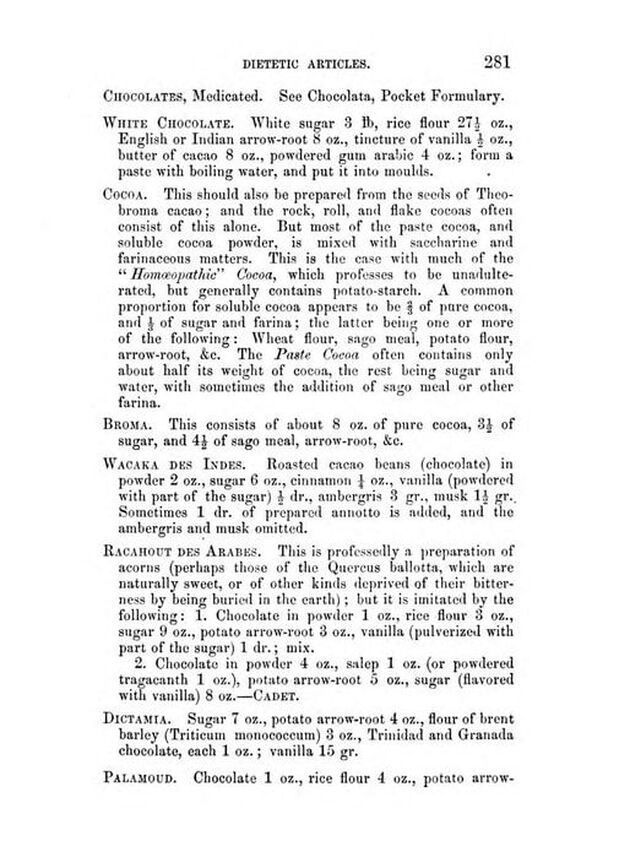 A recipe for white chocolate calling for rice flour, cocoa butter, and gum arabic. From "The Druggist's General Receipt Book: Containing a Copious Veterinary Formulary : Numerous Recipes In Patent And Proprietary Medicines, Druggists' Nostrums, Etc. : Perfumery And Cosmetics : Beverages, Dietetic Articles, And Condiments : Trade Chemicals, Scientific Processes, And an Appendix of Useful Tables," by Henry Blakely and published in 1871. The Druggist's General Receipt Book: Containing a Copious Veterinary Formulary : Numerous Recipes In Patent And Proprietary Medicines, Druggists' Nostrums, Etc. : Perfumery And Cosmetics : Beverages, Dietetic Articles, And Condiments : Trade Chemicals, Scientific Processes, And an Appendix of Useful Tables by Henry Blakely and published in 1871, has a white chocolate recipe very similar to the one from "A Boston Lady." A mixture of white sugar, rice flour, arrowroot powder, vanilla, cocoa butter, and gum arabic, mixed with boiling water and molded, the resulting confection was likely a chewy one. White Chocolate Caramel Tablets, 1869The Royal Cookery Book (le Livre de Cuisine) by Jules Gouffé, Alphonse Gouffé (1869) revealed this interesting recipe: White chocolate caramel tablets were probably a type of chewy caramel, although it's difficult to say, given the recipe. Boiling sugar to the "breaking point" indicates possibly hard crack stage, in which case the tablets would be more like toffee or a hard caramel candy, rather than the soft white chocolate we are used to. The Broma Process, 1865Invented around 1865 by a worker at the Ghirardelli Chocolate Company, the broma process involves placing roasted cocoa beans in a bag just above room temperature to allow the cocoa butter to drip out. The remaining cocoa beans could then be processed into cocoa powder. But what to do the with cocoa butter? Much of it was processed back into bar chocolate, making it richer than 100% cacao. But I think the surplus of cocoa butter from the cocoa powder process meant that people were more interested in trying out different types of chocolate, like white chocolate. The timeline certainly matches the above findings of pre-1930s white chocolate. The Zero Bar, 1920One last candy was niggling at the back of my head - the Zero Bar, first introduced in around 1920 as the "Double Zero Bar" by the Hollywood Brands company, based in Minneapolis, MN. In 1934 the name was changed to "Zero Bar" and the wrappers have always brought to mind chilly temperatures, which was by design. A caramel nougat with almonds and enrobed in white fudge, this candy bar appears to be one of the earliest commercial applications of white chocolate. Today, the Zero Bar is still manufactured by the Hershey Company, although it can be difficult to find in stores. White Chocolate ConclusionsWhen all is said and done, Nestle still appears to be the first company to market solid white chocolate on a commercial scale, although the Zero Bar clearly predates the Milkybar/Galak by over ten years and the Alpine White (first introduced in 1948) by nearly twenty. I personally enjoy white chocolate, and the Zero bar was a childhood favorite of mine, although I know many people think white chocolate is inferior to the kind including the whole bean. But I'm not sure I enjoy it quite as much as these Alpine White television commercials would have us believe. Do you like white chocolate? Do you have a favorite candy bar? Let me know in the comments! The Food Historian blog is supported by patrons on Patreon! Join us for awesome members-only content like free digitized cookbooks from my personal collection, e-newsletter, and even snail mail from time to time!
3 Comments
John Taylor
2/14/2022 10:58:29 am
White chocolate was invented by 3 men in Indianapolis . They held the patent on white chocolate until they sold it. One of the inventors was Ray Perrymen,
Reply
2/14/2022 11:38:52 am
Oh wow, John! Tell me more! I looked up Ray in Google Patents but couldn't find him. What year was this? Do you know the names of any of the other men?
Reply
Karla Schade
9/15/2023 06:49:51 pm
I have heard that Frederick Hebert, who started Hebert Candies in Shrewbury, MA (about 45 minutes south of Boston), was the first to start making it and selling it in the US after trying it in Europe. My source for that info: https://www.hebertcandies.com/pages/history-test That is also reiterated on their Wikipedia page. Its late so I am not sure why they say first. Just adding to the info.
Reply
Your comment will be posted after it is approved.
Leave a Reply. |
AuthorSarah Wassberg Johnson has an MA in Public History from the University at Albany and studies early 20th century food history. Archives
July 2024
Categories
All
|
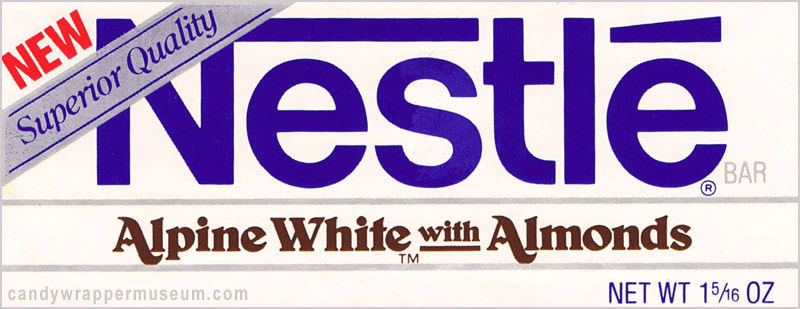

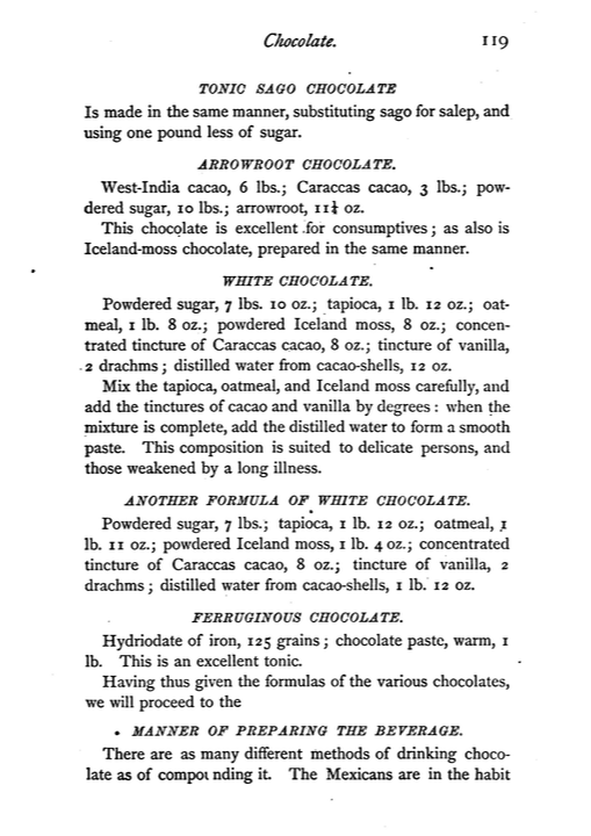
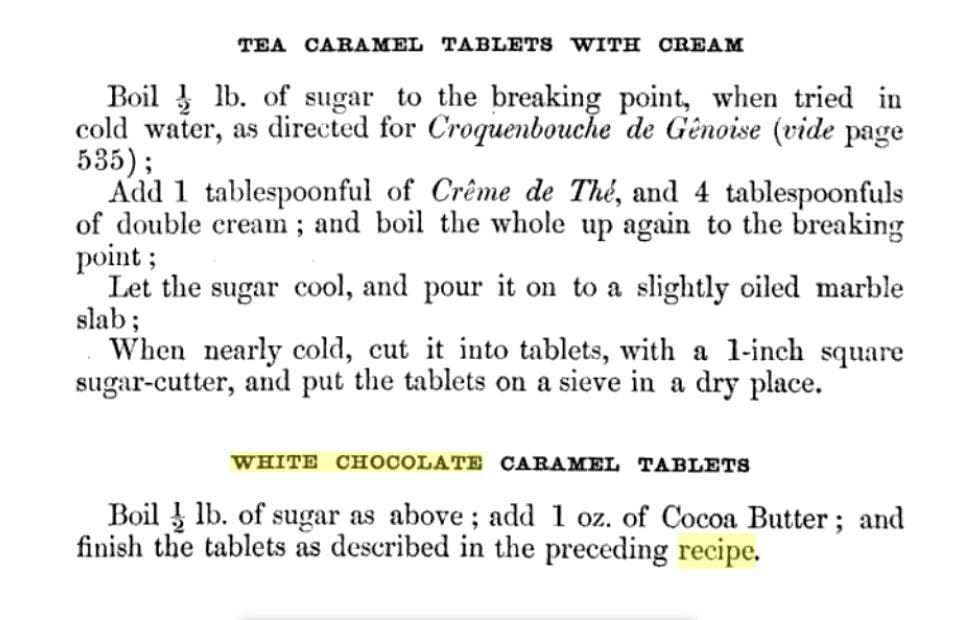
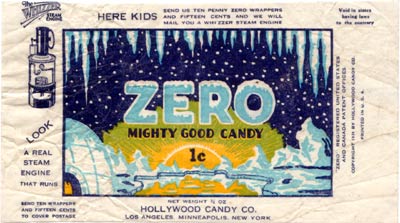


 RSS Feed
RSS Feed